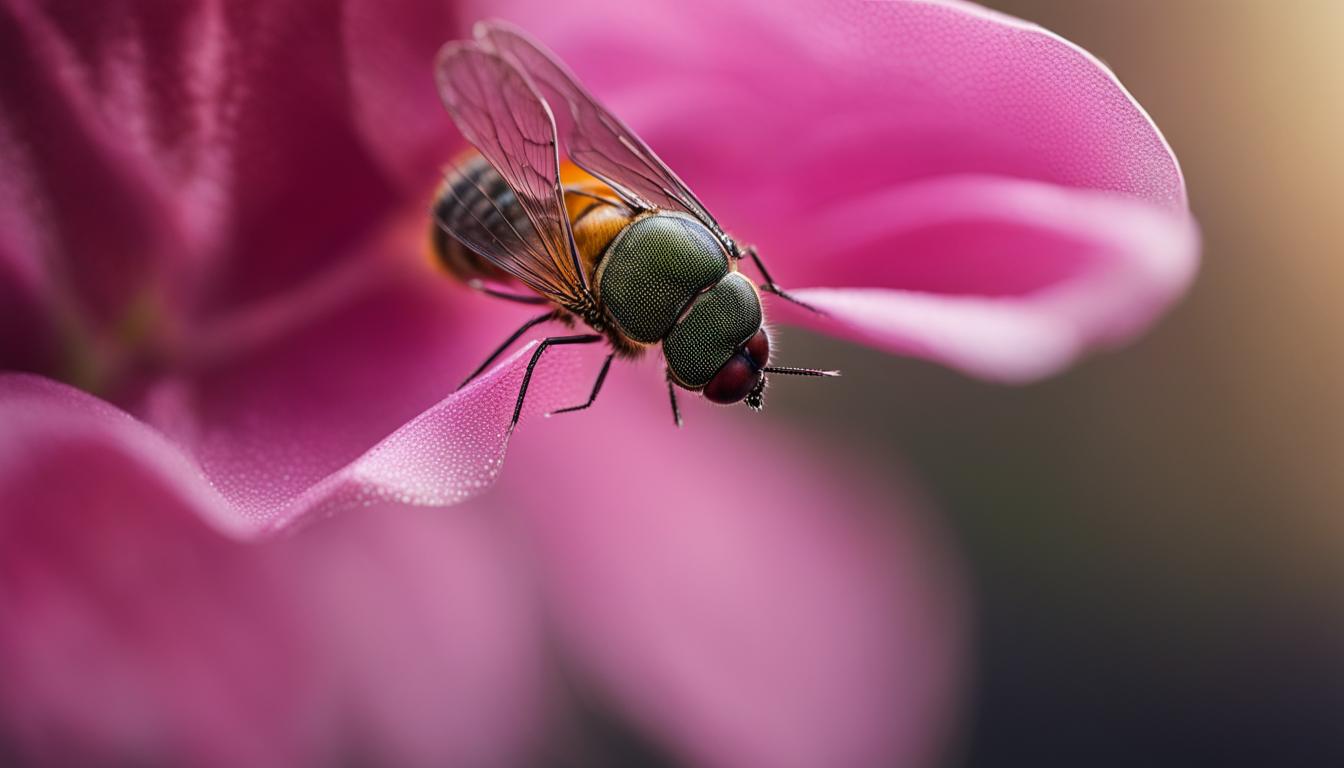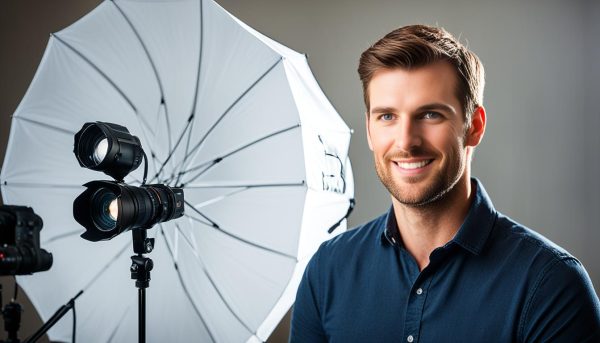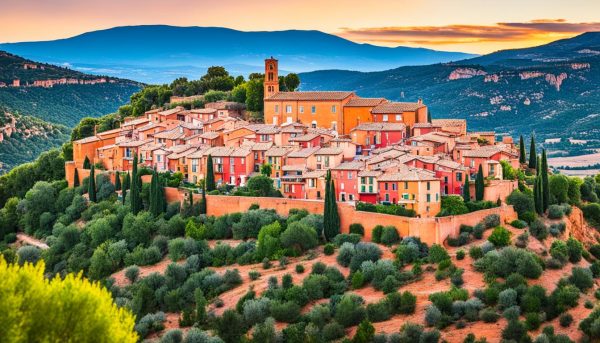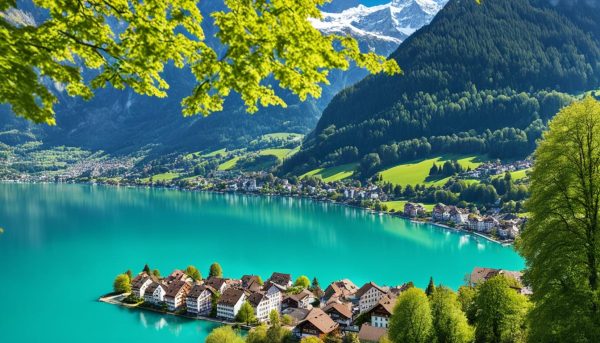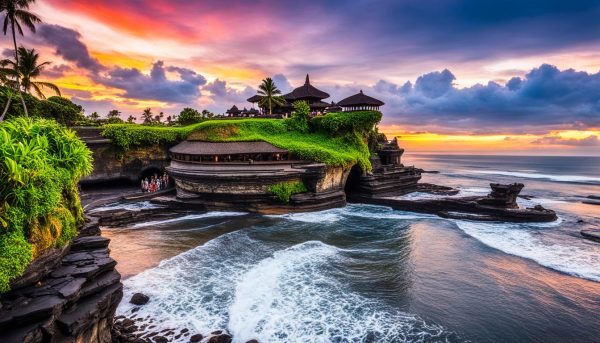Are you ready to discover the enchanting world of close-up photography? Enter the world of Macro Magic, where every detail is brought to life through the lens of your camera. Macro photography allows you to explore the intricate details and hidden beauty of subjects that are often overlooked by the naked eye. Be prepared to experience a new level of creativity and inspiration as you delve into the captivating world of close-up photography.
Key Takeaways:
- Macro photography allows you to capture the intricacies and hidden beauty of subjects up close.
- The art of Macro Photography involves capturing extraordinary and intimate moments that showcase the beauty of your subject.
- Essential equipment such as macro lenses, extension tubes, and accessories are crucial for capturing stunning close-up images.
- Mastering Macro Photography techniques such as Depth of Field, Focus Stacking, and Lighting Techniques will take your images to the next level.
- Macro photography presents challenges such as Depth of Field and Lighting, but with the right techniques and solutions, you can overcome these obstacles and capture breathtaking images.
The Art of Macro Photography
Macro photography is not just about capturing small objects; it’s about capturing the essence of these objects in a larger-than-life way. The art of macro photography lies in the details – from the textures of a butterfly’s wings to the dew drops on a blade of grass. This technique allows photographers to create images that are both intimate and extraordinary, showcasing the beauty of subjects that often go unnoticed by the naked eye.
At its core, the art of macro photography is about exploring the unseen world around us, and capturing it in a way that is both visually stunning and emotionally resonant. By using macro lenses and other equipment, photographers can create images that reveal the hidden intricacies of everyday objects, transforming them into something truly breathtaking.
But macro photography is more than just a technical skill – it requires a keen eye for composition, color, and form. By manipulating light, focus, and perspective, photographers can create images that are both aesthetically pleasing and emotionally impactful.
“Photography takes an instant out of time, altering life by holding it still.” – Dorothea Lange
As with any art form, the art of macro photography is a never-ending journey of discovery and growth. By experimenting with new techniques and approaches, photographers can continue to push the boundaries of what is possible, creating images that are truly works of art.
Essential Equipment for Macro Photography
Macro photography requires specific equipment to capture intricate details up close. Below we have listed the essential equipment required to take stunning close-up images:
| Equipment | Description |
|---|---|
| Macro Lens | A lens specifically designed for macro photography, with a magnification of at least 1:1. Popular brands include Canon, Nikon, and Tamron. |
| Extension Tubes | Used to increase the distance between the lens and the camera sensor, resulting in closer focusing abilities. |
| Reversal Ring | A ring that attaches to the front of a standard lens, allowing it to be reversed for macro photography. |
| Tripod | Helps stabilize the camera and lens, allowing for sharper images and longer exposures. |
| Remote Shutter Release | Prevents camera shake caused by pressing the shutter button, resulting in sharper images. |
| Ring Light or Flash | Provides proper lighting for macro shots, helping to illuminate your subject and reduce shadows. |
| Reflector | Used to redirect and reflect light onto your subject, reducing harsh shadows. |
While the above equipment is not exhaustive, it will allow you to take your first steps in macro photography. As you gain experience, you may find that additional equipment can enhance your photographic experience.
Mastering Macro Photography Techniques
Macro photography is all about capturing the tiniest details and bringing them to life. To master macro photography, it’s essential to develop a deep understanding of the techniques that can make your images stand out. Here are some tips to help you perfect your craft:
Depth of Field
Depth of field is one of the most important aspects of macro photography. It refers to the area of your image that appears in focus. In macro photography, depth of field is often extremely shallow, so it’s crucial to choose the right aperture to ensure the focus is precisely where you want it to be. Typically, you’ll want to use a smaller aperture, such as f/11 or f/16, for greater depth of field.
Focus Stacking
Focus stacking is a technique used to achieve a greater depth of field in macro photography. It involves taking multiple images of the same subject, each with a slightly different focus point, and then combining them into a single image in post-processing. This results in a final image that is tack sharp from front to back. To achieve this effect, you’ll need to use a tripod and a focus rail to ensure that each shot is consistent.
Lighting Techniques
Lighting is crucial in macro photography, as it can make or break the image. One popular technique is to use diffused light, which softens harsh shadows and evens out the lighting across your subject. You can achieve this by using a softbox, a light tent, or even a simple white umbrella to soften the light source. Alternatively, you can try using natural light, as it can provide a soft and flattering illumination that works well for macro photography.
Composition Tips
Composition is the art of arranging the elements in your image in a visually pleasing way. In macro photography, there are many ways to compose your shots to create interesting and unique images. One popular method is to use the rule of thirds, which involves dividing your image into thirds both horizontally and vertically and placing your subject at the intersection of these lines. This creates a dynamic composition that draws the viewer’s eye to the subject. You can also experiment with different angles, perspectives, and framing techniques to achieve a range of creative results.
Exploring the Macro World of Nature
Nature is a fascinating and diverse world that offers endless opportunities for macro photography. From flowers and plants to insects and animals, the macro lens allows us to capture the vibrant colors, intricate patterns, and unique textures of the natural world up close.
One of the most popular subjects in macro nature photography is insects. These tiny creatures are abundant and offer a range of interesting shapes, colors and textures. For instance, the image below showcases a ladybug walking on a leaf. You can see the reflection of the leaf on the ladybug’s shell as well the intricate patterns and details of the insect’s legs.
Another popular subject in macro nature photography is flowers. With a macro lens, you can capture the delicate details of petals and the intricate patterns of the flower’s center. Check out the image below, which shows the texture and vibrant colors of the center of a flower.
The natural world also offers a range of textures and patterns that can make for stunning macro photographs. For instance, the image below showcases the unique texture of a tree bark, with its intricate grooves and patterns.
Overall, the macro world of nature is a captivating and rewarding subject for photographers. With the right equipment, techniques, and a keen eye for detail, you can capture the hidden beauty and wonder of the natural world.
Macro Photography in Everyday Objects
Macro photography can add a whole new dimension to everyday objects, transforming them into visually stunning works of art. The technique allows you to magnify and capture intricate details that are often unnoticed by the naked eye. With the right approach, you can turn the most mundane objects into extraordinary subjects.
Take a look at some of these creative ways you can use macro photography to capture everyday objects:
| Object | Macro Shot |
|---|---|
| Coins | |
| Button | |
| Matchstick |
As you can see, even everyday objects can reveal a hidden beauty when captured through the lens of a macro camera. By exploring the small details, you can create images that are not only visually pleasing but also thought-provoking.
When shooting everyday objects, think about how you can use light and composition to enhance the overall impact of your photographs. Experiment with different angles and lighting conditions to bring out the best in your subject. By doing so, you can create truly unique and captivating images.
The possibilities of macro photography are endless. With the right equipment, techniques, and creative eye, you can turn any subject into a work of art.
Challenges and Solutions in Macro Photography
Macro photography can present several challenges, from achieving adequate depth of field to finding proper lighting conditions. In this section, we’ll explore some common hurdles that photographers face in the macro world and offer practical solutions to overcome them.
Challenge: Shallow depth of field
One of the most significant challenges in macro photography is achieving sufficient depth of field. When shooting up close, the area in focus can be incredibly narrow, making it difficult to get the entire subject sharp.
Solution: One way to address the shallow depth of field is to use a smaller aperture (higher f-stop number). This will increase the zone of sharpness and ensure that more of the subject is in focus. You can also experiment with focus stacking, which involves taking multiple shots at different focus points and blending them together in post-processing.
Challenge: Camera shake
Camera shake can be a common problem in macro photography, as even the slightest movement can cause blur in your shots.
Solution: To combat camera shake, use a tripod or a stable surface to set up your camera. You can also use a remote shutter release or the timer function on your camera to avoid any additional movement caused by pressing the shutter button.
Challenge: Lighting
Proper lighting is crucial in macro photography, as it can significantly affect the mood and composition of your images.
Solution: Experiment with different lighting sources to find what works best for your subject. Natural sunlight can be an excellent option for outdoor shots, while diffused artificial light can provide even lighting indoors. You can also use reflectors or diffusers to control the amount and direction of light.
Challenge: Subject movement
When shooting living subjects such as insects, movement can be a significant challenge in macro photography, making it difficult to get sharp and in-focus shots.
Solution: Try to anticipate your subject’s movements and use a fast shutter speed to freeze any motion. You can also use continuous shooting mode to capture multiple shots in quick succession, increasing your chances of getting a sharp image.
By understanding and overcoming these common challenges, you’ll be well on your way to becoming a successful macro photographer. Remember, experimentation and practice are key to mastering this exciting genre of photography.
Creative Macro Photography Projects
Macro photography is a fascinating technique that allows you to capture the intricate details of your subject, often revealing hidden beauty that’s not visible to the naked eye. But what if you want to take macro photography to the next level? In this section, we’ll explore some creative macro photography projects that will push your skills to the limit.
1. Water Droplets
Water droplets are an excellent subject for macro photography, and you can create stunning images with just a few simple props. Place a colorful background behind a glass bowl filled with water, and then carefully add a few droplets of water to the surface. Experiment with different lighting angles and camera settings to capture the perfect shot. For an added challenge, try capturing the reflection of an object in the water droplet.
2. Insect Eyes
Insect eyes are a fascinating subject for macro photography, and they offer a unique perspective on the world. To capture this shot, you’ll need a macro lens and a steady hand. Get as close as possible to the insect’s eye, and make sure to focus on the eye itself. Try to capture the texture and color of the eye, and experiment with different angles to create a dramatic effect.
3. Flower Petals
Flower petals are a classic subject for macro photography, but there are many ways to get creative with this familiar subject. Try capturing the petals from an unusual angle, such as the top or the bottom. You can also experiment with different lighting, or even use a black background to create a dramatic contrast.
4. Abstract Macro Shots
Macro photography offers endless possibilities for abstract shots. Look for unusual textures or patterns, and experiment with different lighting and camera settings to create a surreal effect. You can also try manipulating the focus to create a dreamy, out-of-focus effect.
5. Food Photography
Macro photography can also be applied to food photography, showcasing the textures and details of your favorite dishes. Try photographing fruits and vegetables up close, or capture the intricate details of your dessert. You can also experiment with different props and lighting to create a visually stunning image.
These creative macro photography projects are just the tip of the iceberg. With a little imagination and some technical know-how, the possibilities for macro photography are endless.
Post-Processing and Showcasing Macro Images
After capturing stunning macro shots, it’s time to enhance and showcase them in the best possible way. Post-processing can take your images to the next level, emphasizing their intricate details and vibrant colors. Here are a few techniques to try:
- Focus Stacking: This technique involves merging multiple images taken at different focal points to create a single image with sharp details throughout. Use software like Adobe Photoshop or Helicon Focus to achieve the best results.
- Color Correction: Adjusting the color tone and saturation of your image can bring out the best of its details and hues. Use software like Adobe Lightroom or Capture One to make these adjustments effectively.
- Cropping and Framing: Sometimes, cropping a macro image can highlight its subject and give it a unique perspective. Framing your image correctly can also bring out its best features. Use the “Rule of Thirds” to frame your subject effectively.
Once you’ve post-processed your macro images, it’s time to showcase them. Here are a few ways to do so:
- Online Platforms: Share your macro shots on online platforms like Instagram, Facebook, or Flickr, and engage with other photographers who appreciate macro photography.
- Print: Print your macro images in high-quality and display them in exhibitions, galleries, or even your homes. Nothing beats the feeling of seeing your work in print format.
- Photo Books: Consider creating a photo book of your macro shots, telling a story with your images. Companies like Shutterfly and Blurb offer easy-to-use book creation software for this purpose.
Remember, showcasing your macro images effectively can make all the difference in the way they’re perceived. So, experiment with different post-processing techniques and showcase your work with confidence.
Conclusion
Macro photography is a magical world that offers endless opportunities for photographers to capture the hidden beauty of our surroundings. Through the art of close-up photography, we learn to appreciate the intricate details of everyday objects and the mesmerizing patterns of nature.
With the right camera equipment and techniques, anyone can master the art of macro photography. Whether you’re a professional photographer or just starting out, the beauty of macro photography is accessible to all.
Final Thoughts
Remember, the key to successful macro photography is practice and patience. Experiment with different camera settings, lighting conditions, and subjects. Push the boundaries of your imagination and explore the world of macro photography to its fullest.
And when you’ve captured breathtaking macro shots, don’t forget to showcase your work for the world to see. Use post-processing techniques to enhance your images and consider exhibiting your work in galleries or online platforms. Share your passion for macro photography and inspire others to appreciate the beauty that surrounds us.
So what are you waiting for? Grab your camera, get up close, and let the magic of macro photography unfold!
FAQ
What is macro photography?
Macro photography is a technique that allows photographers to capture detailed and close-up shots of subjects, revealing intricate details that are often overlooked by the naked eye.
What equipment do I need for macro photography?
To excel in macro photography, you will need a macro lens, which is specifically designed for close-up photography. Additionally, you may also use extension tubes or diopters to further magnify your subject. Other accessories such as a tripod, remote shutter release, and external flash can be beneficial in achieving sharp and well-lit images.
How do I achieve a shallow depth of field in macro photography?
Achieving a shallow depth of field in macro photography can be done by using a wide aperture setting (small f-number) on your camera. This will help to isolate your subject and create a blurred background, resulting in a visually appealing image.
What are some common challenges in macro photography?
Some common challenges in macro photography include dealing with a limited depth of field, achieving sufficient lighting, and keeping the subject in focus. These challenges can be overcome with practice, experimentation, and proper equipment.
How can I showcase my macro images effectively?
To effectively showcase your macro images, consider post-processing techniques to enhance the colors, contrast, and sharpness of your images. Additionally, you can create an online portfolio or participate in exhibitions to share your work with a wider audience.
Can I use macro photography for subjects other than nature?
Absolutely! While macro photography is often associated with capturing the beauty of nature, it can be applied to various subjects. Everyday objects and even abstract concepts can be transformed into stunning macro photographs, allowing you to see the world in a new and unique way.
How do I capture water droplets in macro photography?
To capture water droplets in macro photography, you can use a spray bottle to create fine mist or droplets on the subject. Adjust your camera settings to a fast shutter speed to freeze the motion of the droplets, and experiment with different angles and lighting to achieve desired results.
What are some creative macro photography projects I can try?
There are endless creative possibilities in macro photography. Some project ideas include capturing the intricate patterns on butterfly wings, exploring the textures of fruits and vegetables, or even creating abstract compositions using everyday objects. Let your imagination run wild and experiment with different subjects and concepts.
How can I overcome the challenges of macro photography?
Overcoming the challenges of macro photography requires practice, patience, and experimentation. Familiarize yourself with the technical aspects of your camera and the specific features of your macro lens. Additionally, learn to adapt to different lighting conditions and explore different techniques such as focus stacking to achieve the desired results.
Can I use a smartphone for macro photography?
Yes, you can use a smartphone for macro photography. There are various clip-on macro lenses available in the market that can be attached to your smartphone camera. Additionally, smartphone apps can help you fine-tune your macro shots and experiment with different settings to enhance the quality of your images.

